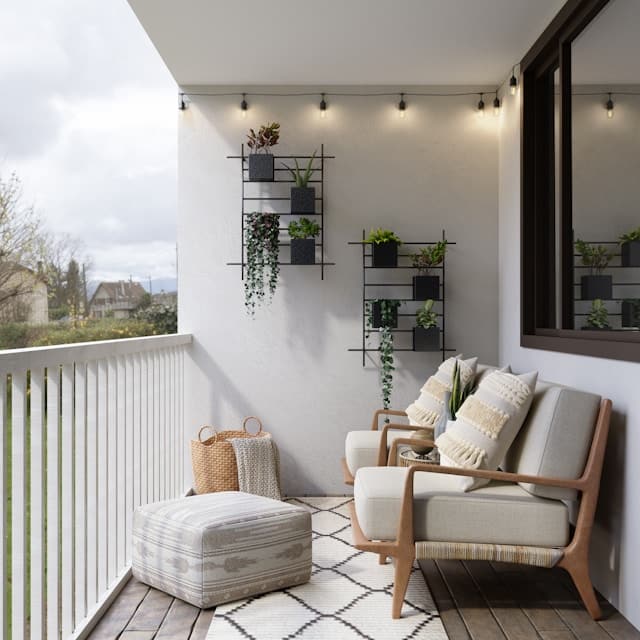How to Create an Eco-Friendly Rainwater Harvesting System for Your Garden?

Creating an eco-friendly rainwater harvesting system for your garden is one of the most sustainable actions you can take. Not only will it provide an abundant supply of water for your plants, but it will also reduce your dependence on the municipal water supply and help conserve our precious resources. The process involves the collection and storage of rainwater from your roof, which is then used for irrigation of the landscape. This article will guide you through the essential steps to design and implement your own rainwater harvesting system.
Understanding the Basics of Rainwater Harvesting
The concept of rainwater harvesting is not a new invention. People have been collecting rainwater for centuries, using simple systems like barrels under a roof’s downspout. However, the advent of more sophisticated design and technology now allows us to create more efficient and sustainable systems.
Dans le meme genre : How Can You Integrate a Portable Greenhouse into Your Urban Gardening Strategy?
Rainwater harvesting involves several key components: the collection area (usually the roof), the conveyance system (like gutters and downspouts), a storage tank or barrel, and a delivery system for irrigation. The design of your system will depend on the size of your garden, the amount of rainfall your area receives, and the specific needs of your plants.
Understanding the basics of rainwater harvesting is the first step towards building a system that is optimal for your garden. Don’t worry, it’s not as complicated as it sounds. Let’s dive into it.
A découvrir également : What Are the Best Indoor Climbing Structures for Active Pets?
Designing Your Rainwater Harvesting System
When designing your rainwater harvesting system, you’ll want to consider the size and layout of your garden, the type and quantity of plants you have, and the average rainfall in your area. All these factors will influence the size and design of your system.
Start by calculating how much rainwater you can collect. A simple rule of thumb is that for every inch of rain falling on a 1,000 square foot roof, you can collect approximately 600 gallons of water. This calculation should give you an idea of the size of the storage tank or barrel you’ll need.
Next, consider how you’ll get the rainwater from your roof to your storage tank. Gutters and downspouts are commonly used for this purpose. Ensure they are properly maintained and free of debris to ensure a smooth flow of water.
Your storage tank or barrel can be as simple or as complex as you want it to be. There are many options available on the market, from simple rain barrels to large underground cisterns. Consider factors such as cost, space, and aesthetics when choosing your storage option.
Installing Your Rainwater Harvesting System
Once you’ve designed your system, it’s time to install it. This can be a do-it-yourself project if you’re handy, or you can hire professionals to do it for you. Either way, it’s important to ensure that the system is installed correctly to avoid any leaks or other problems down the line.
Start by placing the barrel or tank at a convenient location, preferably near a downspout. Most barrels come with a lid to prevent debris from entering the water. Be sure to secure the barrel or tank to prevent it from tipping over when it’s full.
Next, connect the downspout to the barrel or tank. You might need to cut the downspout to the appropriate length. Attach a diverter if you want to switch between using rainwater and municipal water.
Finally, set up your irrigation system. This could be as simple as attaching a hose to the bottom of the barrel, or it could involve a more complex system with pipes and sprinklers.
Maintaining Your Rainwater Harvesting System
Maintenance is essential to keep your rainwater harvesting system running smoothly and efficiently. Regular check-ups will ensure that your system is collecting and storing water correctly, and that it is delivering the water to your garden effectively.
Check the roof and gutters regularly for debris. Leaves, twigs, and other debris can clog the system and prevent water from flowing into the storage tank. Clean out the gutters and downspouts as needed.
Inspect the storage tank or barrel regularly for leaks. Also check the water for signs of algae or insects. If necessary, cover the tank or barrel with a screen to keep pests out.
Finally, look over your irrigation system to make sure it’s working correctly. Check the hoses, pipes, and sprinklers for leaks or blockages. Making sure the system is well maintained will maximize its efficiency and sustainability.
Enhancing Your Garden with Rainwater
Your plants will thrive on the natural, untreated water from your rainwater harvesting system. Rainwater is free of the chemicals found in municipal water, which can be harmful to plants.
In addition, rainwater is slightly acidic, which is beneficial for most plants. It can help to balance the pH of your soil, promoting healthier plant growth.
Implementing a rainwater harvesting system is not only a sustainable choice for your garden, but it can also enhance your garden’s health and beauty. So why not make the most of the rain and give your garden the gift of natural, life-giving water.
Expanding Your System Over Time
As your garden evolves and grows, it might be necessary to expand your rainwater harvesting system. This could mean adding more barrels, increasing the size of your storage tank, or even adding extra gutters and downspouts. In essence, the system should be dynamic and adaptable to your garden’s needs.
For example, if you decide to add a new flower bed, you may need to capture more rainwater to ensure all your plants are adequately watered. You might also need to extend your conveyance system so that the collected rainwater can reach the new additions in your garden.
Remember that your garden is a living entity – it changes and grows over time. Be prepared to make adjustments to your rainwater harvesting system as needed. It is crucial to monitor the system’s performance and make necessary alterations to meet the changing water demands of your garden. Proactive monitoring and adjustment will not only help conserve water but will also ensure your plants are getting the right amount of water at the right time.
Integrating Rainwater Harvesting with Sustainable Gardening Practices
Integrating your rainwater harvesting system with other sustainable gardening practices can significantly enhance the efficiency and benefits of your eco-friendly venture. Composting, mulching, and using native plants are some of the practices that can go hand-in-hand with water conservation.
Composting enriches the soil, helps retain moisture, and reduces the need for chemical fertilizers. Mulching reduces evaporation, keeping your soil moist for a longer time. This means your garden will require less watering, making the most of your collected rainwater.
Using native plants in your landscape design can also contribute to water conservation. Native plants are adapted to local weather conditions and rainfall patterns, and typically require less watering than non-native species.
So, by integrating your rainwater harvesting system with these practices, you will create a truly sustainable garden – one that conserves water, improves soil health, and supports local biodiversity.
Conclusion: Reaping the Benefits of Your Rainwater Harvesting System
Creating an eco-friendly rainwater harvesting system for your garden is a rewarding endeavor. It reduces your dependence on the municipal water supply, lowers your water bills, and contributes to water conservation. Plus, it provides a natural, chemical-free source of water for your plants, enhancing the health and beauty of your garden.
But the benefits of harvesting rainwater extend beyond your garden. By reducing your water consumption, you’re helping to conserve a precious resource and doing your part to promote sustainability. You’re not just creating a healthier, more vibrant garden – you’re also contributing to a healthier planet.
Once your system is up and running, don’t forget to maintain it regularly to ensure it continues to function effectively. And remember, your system should be adaptable – ready to evolve with your garden.
Embrace the joy of sustainable gardening, and make the most of every raindrop that falls on your roof. By creating an eco-friendly rainwater harvesting system, you’re giving your garden a sustainable, life-sustaining gift that keeps on giving.
